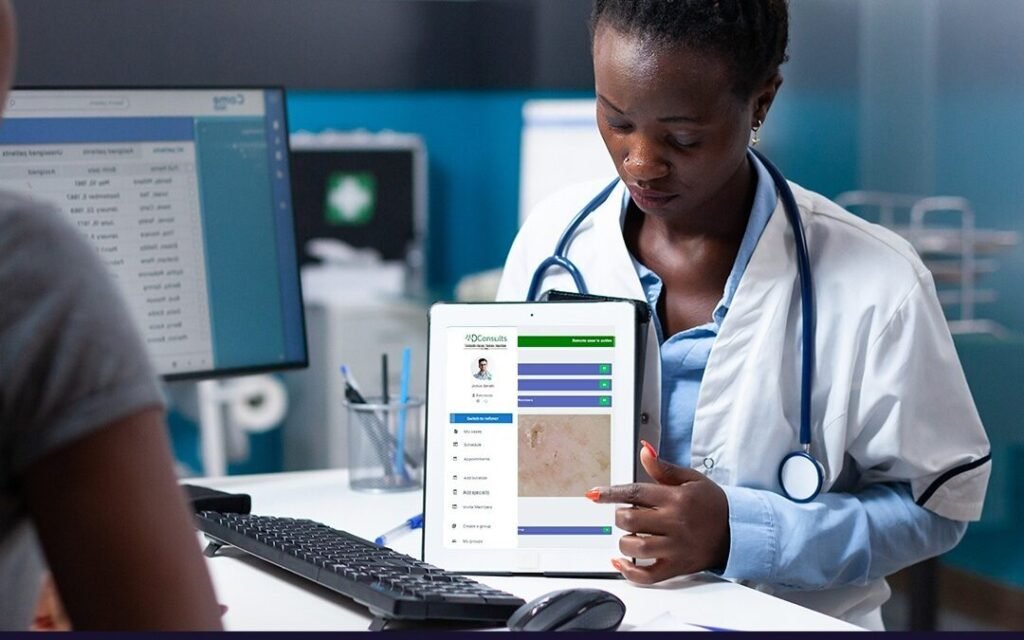In recent years, telemedicine has emerged as a game-changer in the healthcare industry. As technology advances, it has become increasingly clear how telemedicine is transforming healthcare. With its ability to provide remote access to medical care, enhance patient engagement, and improve health outcomes, telemedicine is reshaping how we think about healthcare delivery. Let’s explore the key aspects of this transformation and what it means for patients and providers alike.

1. Increased Accessibility to Care
Breaking Geographical Barriers
One of the most significant ways telemedicine is transforming healthcare is by increasing accessibility. Traditionally, patients living in rural or underserved areas have faced challenges in accessing quality healthcare services. However, telemedicine eliminates geographical barriers by allowing patients to connect with healthcare providers from the comfort of their homes. This accessibility ensures that even those in remote locations receive the care they need, thereby improving health outcomes.
Convenience for Patients
Moreover, telemedicine offers unparalleled convenience for patients. Instead of spending time and money on transportation to a clinic, patients can consult with healthcare professionals through video calls or phone consultations. This convenience not only saves time but also reduces the stress associated with in-person visits. Consequently, more patients are likely to seek care, leading to better management of chronic conditions and overall improved health.
2. Enhanced Patient Engagement
Empowering Patients
Telemedicine empowers patients by giving them more control over their healthcare. With easy access to medical information and the ability to communicate with healthcare providers at any time, patients can take a more active role in managing their health. This engagement leads to improved adherence to treatment plans, as patients feel more connected to their healthcare journey.
Utilizing Digital Tools
Furthermore, telemedicine platforms often include digital tools that facilitate patient engagement. For instance, many telemedicine services offer patient portals where individuals can track their health data, schedule appointments, and access educational resources. These tools encourage patients to stay informed about their health and make proactive decisions regarding their care.
3. Cost-Effectiveness for Healthcare Systems
Reducing Healthcare Costs
In addition to benefiting patients, telemedicine is also transforming healthcare systems by reducing costs. By minimizing the need for in-person visits, healthcare providers can lower operational costs and allocate resources more efficiently. For example, telemedicine can help reduce emergency room visits, as patients can seek care for non-emergency issues remotely. This shift not only saves money for healthcare facilities but also reduces the financial burden on patients.
Streamlining Operations
Moreover, telemedicine streamlines healthcare operations by improving workflow and reducing wait times. With virtual consultations, healthcare providers can manage more patients in a shorter amount of time. This efficiency leads to quicker diagnosis and treatment, ultimately enhancing the quality of care patients receive.
4. Improved Quality of Care
Access to Specialists
Telemedicine also allows patients to access specialists more easily. In the past, patients often had to travel long distances to see specialists, which could lead to delays in care. However, with telemedicine, patients can connect with specialists in various fields without leaving their homes. This immediate access ensures that patients receive timely and appropriate care, which is crucial for managing complex health conditions.
Enhanced Monitoring and Follow-Up
Furthermore, telemedicine facilitates better monitoring and follow-up care. Healthcare providers can use remote monitoring devices to keep track of patients’ vital signs and health metrics. This continuous monitoring enables providers to make timely adjustments to treatment plans and intervene early if complications arise. As a result, patients experience better health outcomes and enhanced overall care quality.
Conclusion
In conclusion, telemedicine is transforming healthcare in numerous ways, from increasing accessibility and enhancing patient engagement to reducing costs and improving the quality of care. As this technology continues to evolve, it promises to further revolutionize the healthcare landscape, making medical care more efficient, affordable, and patient-centered. By embracing telemedicine, we can look forward to a future where everyone has access to the care they need, regardless of their circumstances.




